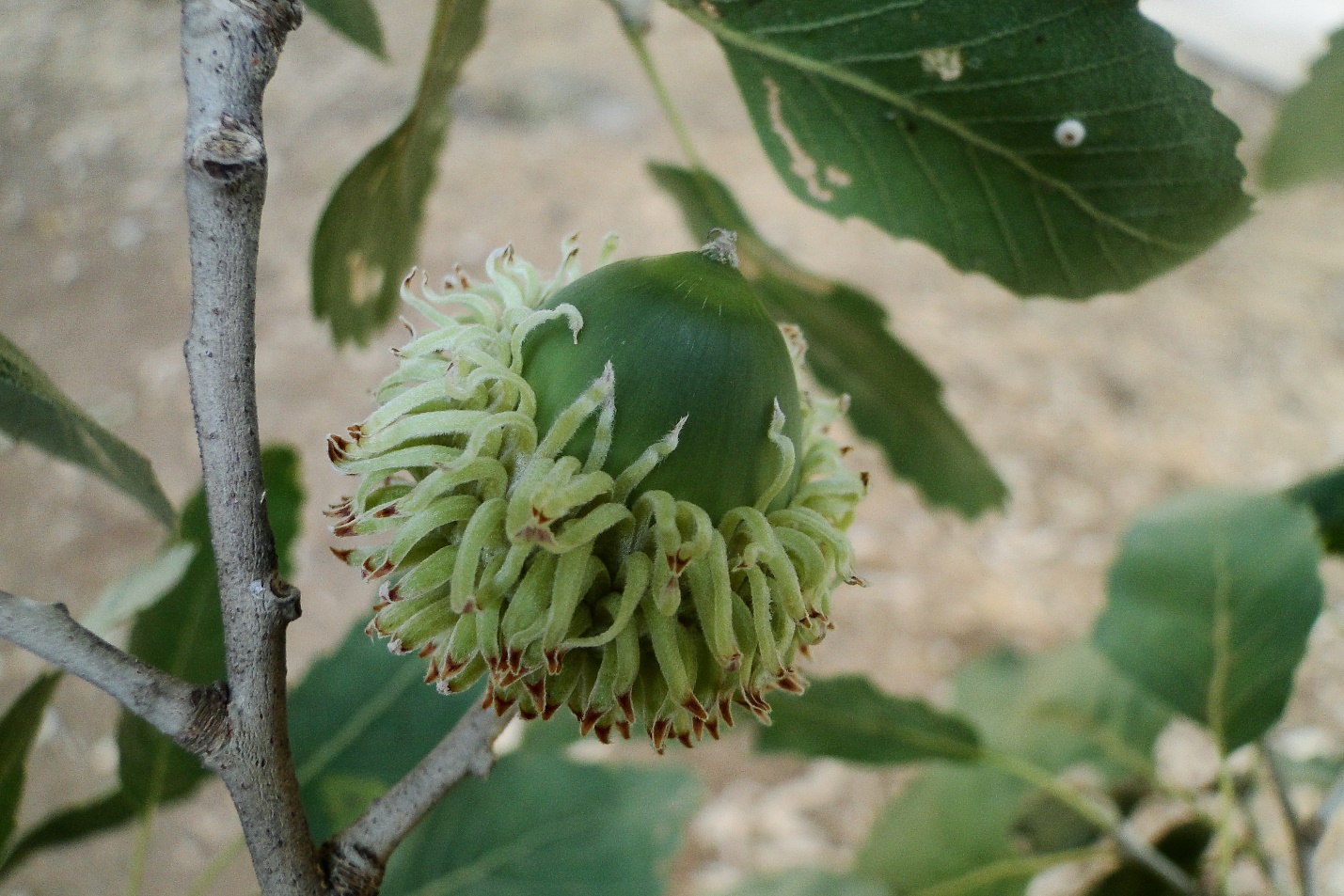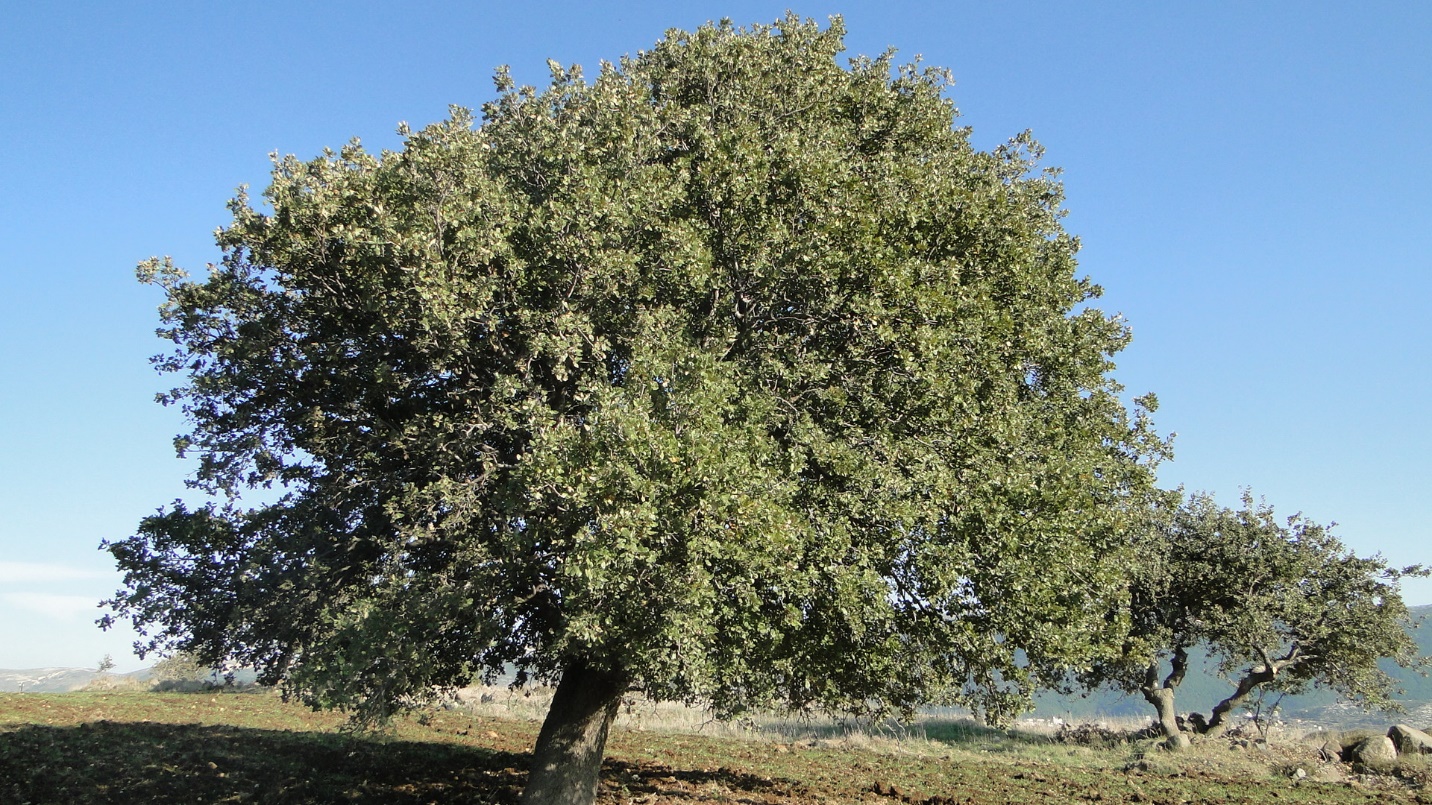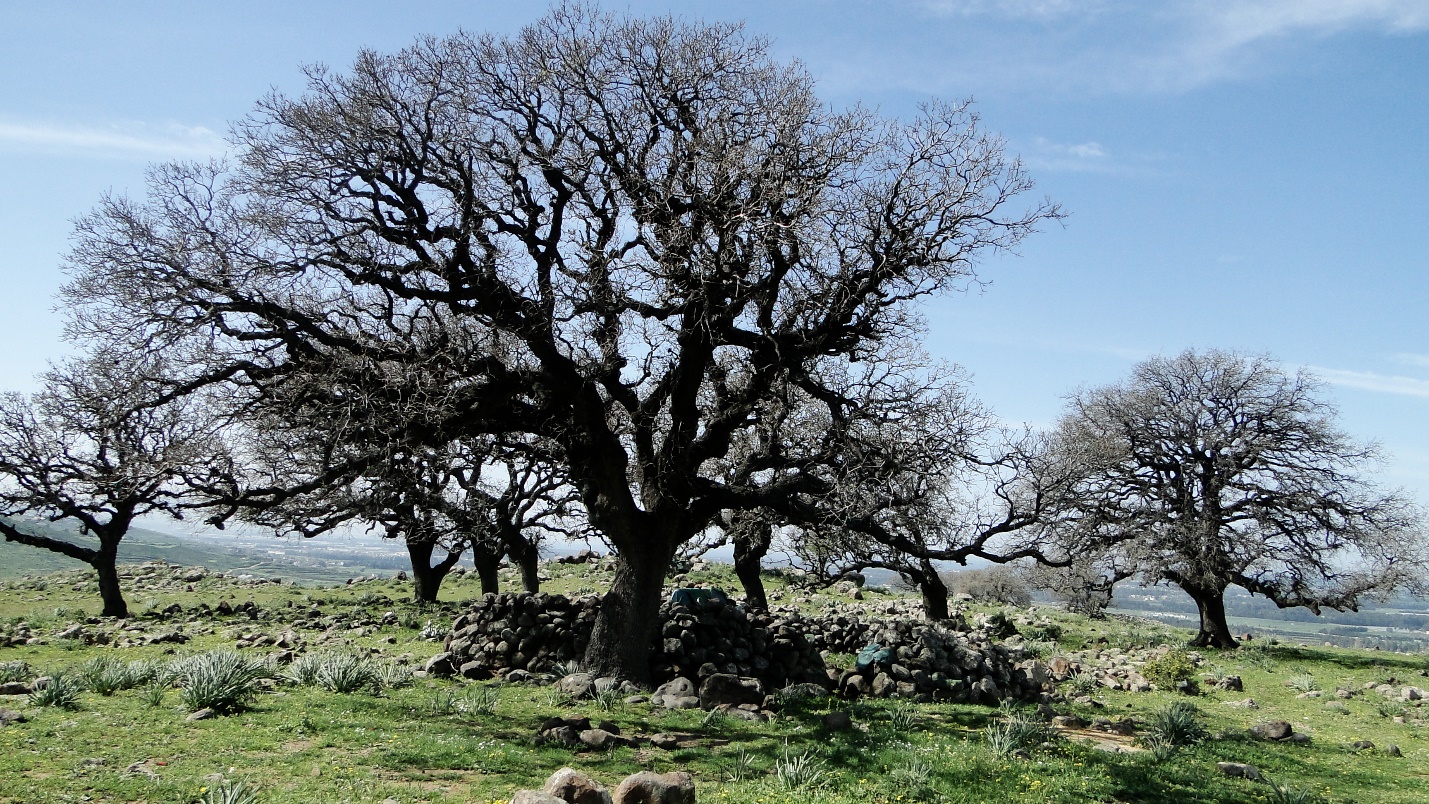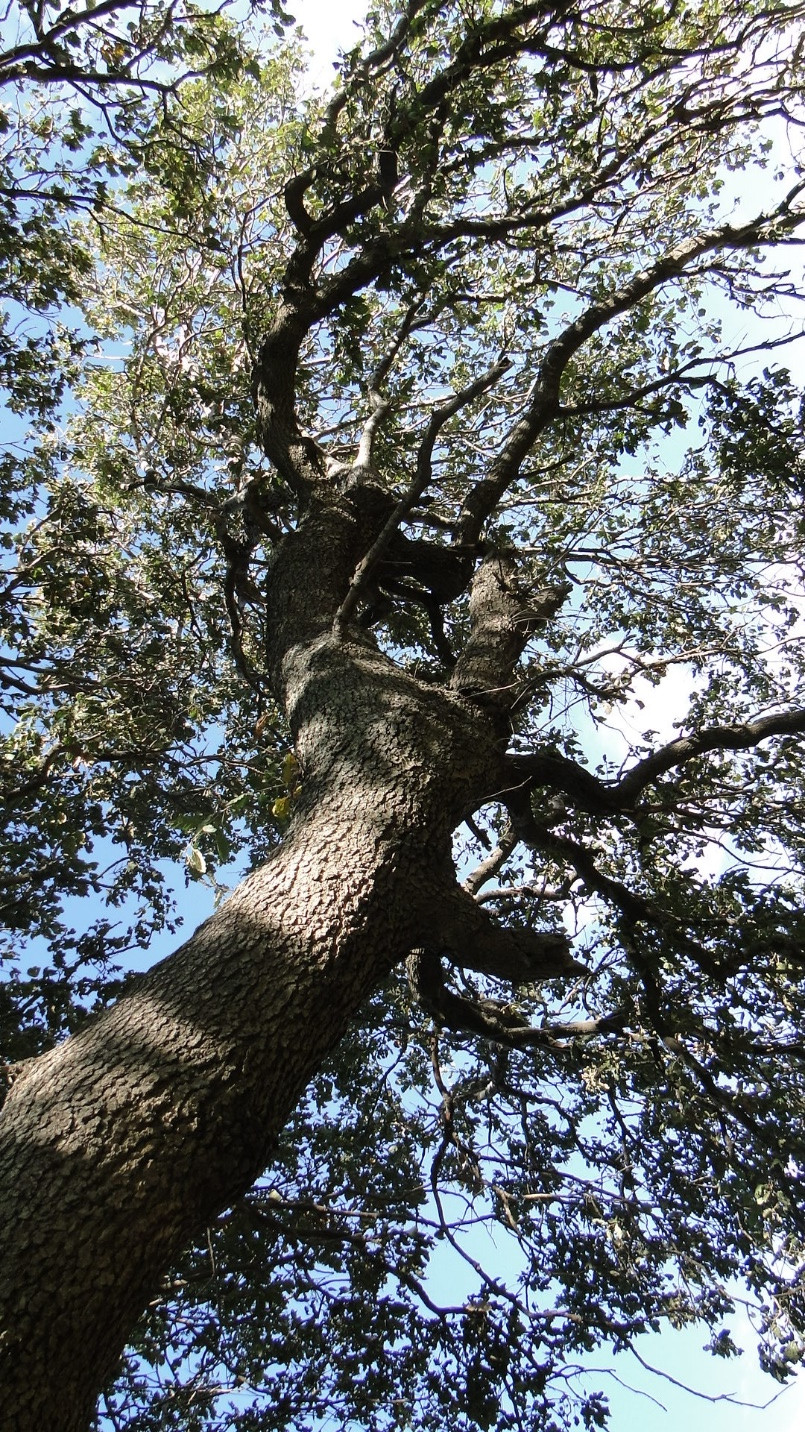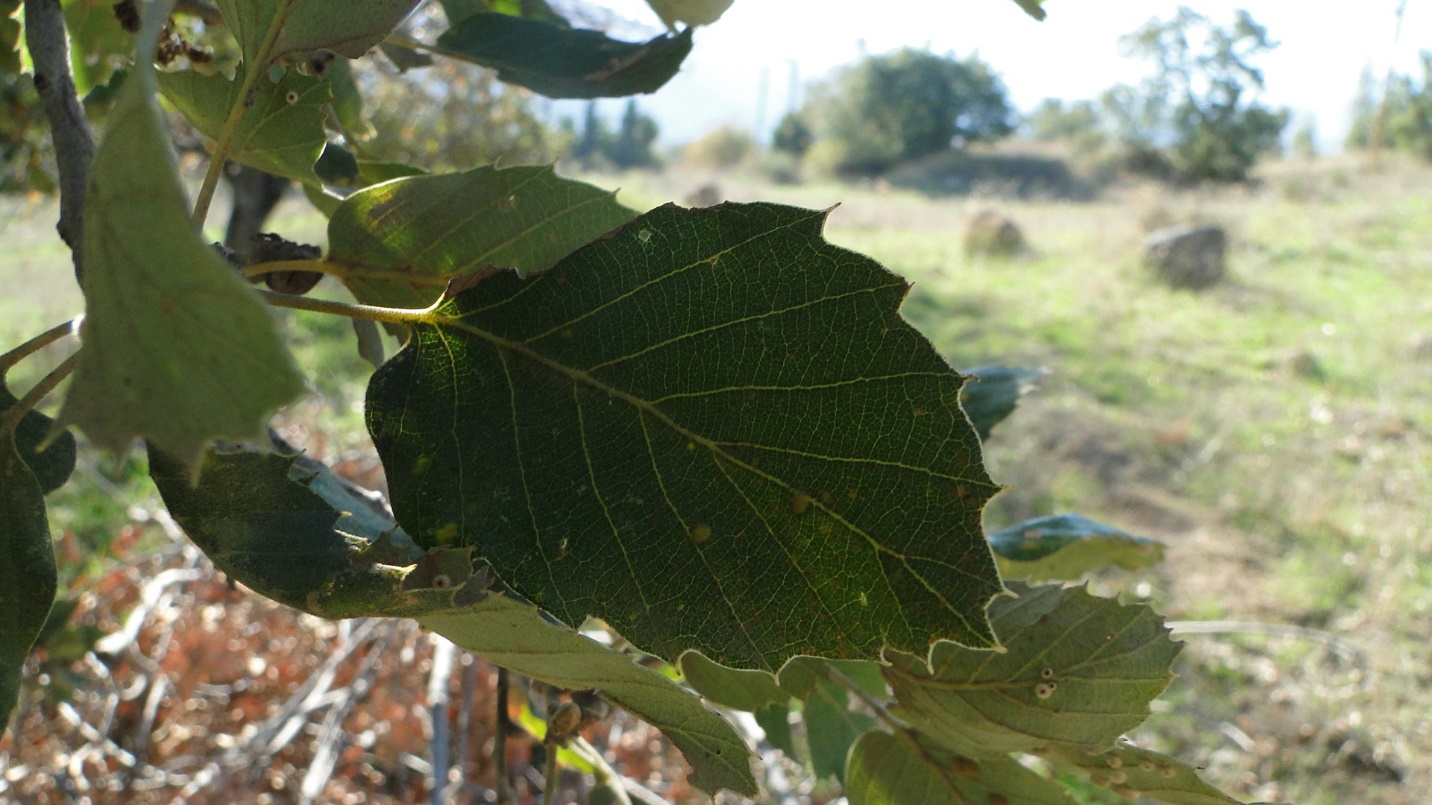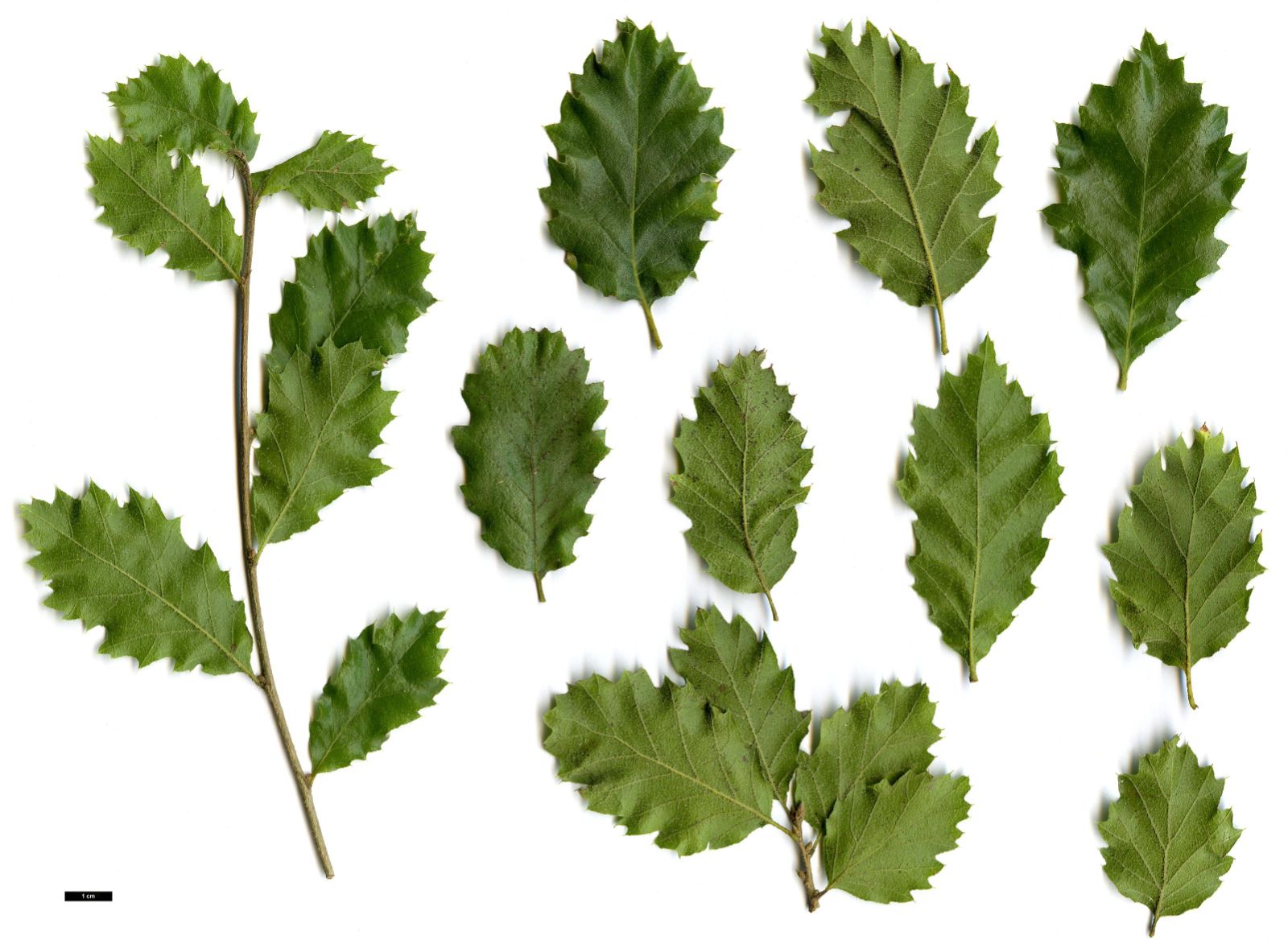Quercus ithaburensis
Sponsor
Kindly sponsored by
The Trees and Shrubs Online Oak Consortium
Credits
Allen Coombes & Roderick Cameron (2021)
Recommended citation
Coombes, A. & Cameron, R. (2021), 'Quercus ithaburensis' from the website Trees and Shrubs Online (treesandshrubsonline.
Genus
- Quercus
- Subgen. Cerris, Sect. Cerris
Common Names
- Tabor Oak
- Mount Tabor Oak
Synonyms
- Quercus aegilops subsp. ithaburensis (Decne.) Eig
- Quercus aegilops var. ithaburensis (Decne.) Boiss.
Other taxa in genus
- Quercus acerifolia
- Quercus acherdophylla
- Quercus acrodonta
- Quercus acuta
- Quercus acutifolia
- Quercus acutissima
- Quercus afares
- Quercus affinis
- Quercus agrifolia
- Quercus alba
- Quercus aliena
- Quercus alnifolia
- Quercus aquifolioides
- Quercus arizonica
- Quercus arkansana
- Quercus aucheri
- Quercus augustini
- Quercus austrina
- Quercus × auzendei
- Quercus baloot
- Quercus bambusifolia
- Quercus baronii
- Quercus bicolor
- Quercus brantii
- Quercus buckleyi
- Quercus canariensis
- Quercus canbyi
- Quercus candicans
- Quercus castanea
- Quercus castaneifolia
- Quercus cerris
- Quercus chenii
- Quercus chrysolepis
- Quercus coccifera
- Quercus cocciferoides
- Quercus coccinea
- Quercus conspersa
- Quercus crassifolia
- Quercus crassipes
- Quercus delavayi
- Quercus dentata
- Quercus deserticola
- Quercus dolicholepis
- Quercus douglasii
- Quercus dumosa
- Quercus durifolia
- Quercus eduardii
- Quercus ellipsoidalis
- Quercus emoryi
- Quercus engelmannii
- Quercus engleriana
- Quercus euboica
- Quercus eugeniifolia
- Quercus fabri
- Quercus faginea
- Quercus falcata
- Quercus floribunda
- Quercus frainetto
- Quercus franchetii
- Quercus fruticosa
- Quercus fusiformis
- Quercus gambelii
- Quercus garryana
- Quercus geminata
- Quercus georgiana
- Quercus germana
- Quercus gilliana
- Quercus gilva
- Quercus glabrescens
- Quercus glauca
- Quercus graciliformis
- Quercus gravesii
- Quercus griffithii
- Quercus grisea
- Quercus guyavifolia
- Quercus hartwissiana
- Quercus hemisphaerica
- Quercus × hispanica
- Quercus hondae
- Quercus hypargyrea
- Quercus hypoleucoides
- Quercus ilex
- Quercus ilicifolia
- Quercus imbricaria
- Quercus incana
- Quercus infectoria
- Quercus insignis
- Quercus kelloggii
- Quercus × kewensis
- Quercus kiukiangensis
- Quercus laceyi
- Quercus laevis
- Quercus lamellosa
- Quercus lanata
- Quercus lancifolia
- Quercus laurifolia
- Quercus laurina
- Quercus × leana
- Quercus leucotrichophora
- Quercus × libanerris
- Quercus libani
- Quercus lobata
- Quercus lobbii
- Quercus lodicosa
- Quercus longinux
- Quercus longispica
- Quercus look
- Quercus × ludoviciana
- Quercus macranthera
- Quercus macrocalyx
- Quercus macrocarpa
- Quercus macrolepis
- Quercus marilandica
- Quercus mexicana
- Quercus michauxii
- Quercus mongolica
- Quercus monimotricha
- Quercus montana
- Quercus morii
- Quercus muehlenbergii
- Quercus myrsinifolia
- Quercus myrtifolia
- Quercus nigra
- Quercus × numidica
- Quercus oblongifolia
- Quercus obtusata
- Quercus oglethorpensis
- Quercus oxyodon
- Quercus pagoda
- Quercus palmeri
- Quercus palustris
- Quercus pannosa
- Quercus parvula
- Quercus petraea
- Quercus phellos
- Quercus phillyreoides
- Quercus planipocula
- Quercus poilanei
- Quercus polymorpha
- Quercus pontica
- Quercus prinoides
- Quercus pubescens
- Quercus pyrenaica
- Quercus rehderiana
- Quercus reticulata
- Quercus robur
- Quercus rotundifolia
- Quercus rubra
- Quercus rugosa
- Quercus rysophylla
- Quercus sadleriana
- Quercus salicina
- Quercus sartorii
- Quercus × schneideri
- Quercus schottkyana
- Quercus semecarpifolia
- Quercus senescens
- Quercus serrata
- Quercus sessilifolia
- Quercus setulosa
- Quercus shumardii
- Quercus sinuata
- Quercus spinosa
- Quercus stellata
- Quercus stenophylloides
- Quercus suber
- Quercus subspathulata
- Quercus tarokoensis
- Quercus tatakaensis
- Quercus texana
- Quercus tomentella
- Quercus trojana
- Quercus tungmaiensis
- Quercus turbinella
- Quercus × turneri
- Quercus undulata
- Quercus utahensis
- Quercus utilis
- Quercus uxoris
- Quercus variabilis
- Quercus velutina
- Quercus virginiana
- Quercus vulcanica
- Quercus warburgii
- Quercus wislizenii
- Quercus xalapensis
Deciduous tree, generally 4–6 m tall, sometimes reaching 15 m in height. Trunk up to 0.5–1 m in diameter, bark dark brown or grey, smooth at first later becoming slightly fissured and corky with many protuberances. Crown rounded or broadly ovoid, branches grey, forming a spreading habit. Young twigs grey-tomentose with stellate hairs, becoming glabrescent depending on climatic conditions, in habitats with mild winters persisting longer. Buds ovoid with appressed scales, hairy mainly at margin. Leaves broad-ovate, 6–10 long × 3–6 m wide, leathery, varying in size and shape on the same tree, base indented, sometimes Z-shaped, obtuse or acute at apex; leaves emerge covered above and below with abundant whitish or yellowish white tomentum, glabrescent above, becoming dark green, somewhat shining, pale and stellate-pubescent above, rarely also pubescent above, with 6–10 lateral nerves ending in triangular, often aristate or long-mucronate teeth, unequal in size and shape; foliage late in falling, rarely in warm winters semipersistent; petiole 1–2 cm long, densely hairy. Acorns solitary or in clusters of 2 or 3, sessile or borne on very short and thick peduncle, ripen in second year; cupule large, 2.5–3 cm deep × 3.5 cm diameter, hemispherical or turbinate, scales thick, lanceolate, recurved, spreading, deflexed or erect, often upper scales long, recurved, the lower short, erect; nut cylindrical, 2–5 cm long × 1.6–1.8 cm wide, one third enclosed in cupule, rarely half. (Zohary & Feinbrun-Dotan 2015; le Hardÿ de Beaulieu & Lamant 2010; Stephan 2017)
Distribution Israel Jordan Lebanon Syria Turkey Southeast Anatolia
Habitat Forests and forest remnants on various soils (rendzina, terra rossa, basalt, sandy-loam soils) 0–500(–1000) m above sea level. Trees are often found isolated or grouped in small clusters, rarely mixed with other oak species like Quercus coccifera or Q. infectoria, and other accompanying species like Styrax officinialis, Pistacia palaestina, Pyrus syriaca, and Crataegus azarolus var. aronia.
USDA Hardiness Zone 6
RHS Hardiness Rating H7
Conservation status Least concern (LC)
Taxonomic note For some authors, Q. ithaburensis includes the subspecies macrolepis, but we follow Avisahai (2016) and others in considering Q. macrolepis a valid species (see entry in TSO). Zohary & Feinbrun-Dotan (2015) recognize five varieties of Q. ithaburensis, distinguished by charactersitics of the acorn and cupule: var. calliprinoides, var. subcalva, var. subinclusa, var. dolicholepis, and var. ithaburensis. They found that fruit characters are faily constant at least in the first generation. The var. ithaburensis is the most widespread and dominates in individual populations. Bean (1976) suggested that a specimen in the Kew Herbarium with thread-like scales represents var. dolicholepis.
Though it was named after a low hill in northern Israel, Tabor Oak is by no means restricted to that location. One of the southernmost deciduous oak species in the Eastern Mediterranean basin, Q. ithaburensis is found mainly in Israel, where it is a leading plant in various oak forest communities, but also further inland in Palestine and Jordan, and its range extends north through Lebanon and Syria to southern Turkey. It is a thermophilous (read ‘sun-loving’) species and prefers mild winters, so is found at low altitudes from sea level (or even below that in the Jordan Valley) up to 600 m (roughly the elevation of the summit of the eponymous Mount Tabor), and in rare instances up to 1000 m. Though in natural habitat some trees are clearly deciduous, others retain their foliage through most of the year, with only a short duration of leaflessness. Ne’Eman (1993) even hypothesized that the species is in an evolutionary transition from deciduous to evergreen. It has also adapted to dry conditions and is relatively drought tolerant, to the extent that its acorns are able to endure significant water loss before losing viability (Ganatsas et al. 2017). Due to its shallow root system it does not do well in heavy soils and thrives mainly in mature deep soils, whether basaltic or limestone. It is found in fertile plains like the Sharon Plain, Lower Galilee, and the Jordan Valley, as well as the Lower Litani watershed and the Akkar plateau on the coastal zones of Lebanon and Syria (Stephan 2017). Together with its close allies Q. macrolepis and Q. brantii, it forms the Valonia or Aegilops group of Section Cerris oaks (see entry in TSO for Q. macrolepis).
Tabor Oak has had a rough time of it in the Anthropocene: since the Neolithic it has suffered from habitat reduction due to human settlement and agricultural expansion in the coastal zones it inhabits. In the Sharon Plain, in particular, the thick oak forests that at one time prevailed (and may have been the origin of the name ‘Sharon’) have been cut down repeatedly, first by Ibrahim Pasha of Egypt in the 1830s for timber for fuel and ship construction, then by the Ottomans in the first two decades of the 20th century for railway construction and fuel for steam engines, and lastly in the period leading up to the establishment of the state of Israel in 1948, when a large part of the forest was transformed into farming areas (Barnea 2019). Jean Stephan (2017) expressed concern at low regeneration rates caused by pest outbreaks, low acorn productivity, and overgrazing, but recognized that trees are being preserved for shade and are rarely pruned for fuel or grazing. Barnea (2019) is more optimistic and notes that distribution of acorns by birds and animals, together with tree planting in private and public areas, is contributing to reforestation in the Sharon area. Monumental trees, which can reach a diameter of 2.50 m and a height of 20 m, are preserved near religious sites, and the Israel Oak Registry records many of these specimens as well as new plantings (Barnea 2018). IUCN’s Least Concern assessment (Gorener & Jerome 2018) is based primarily on populations in Europe of Q. macrolepis, treated by the authors as a subspecies of Q. ithaburensis; they recognize, however, that large populations of Q. ithaburensis have been almost entirely removed from the Sharon Plain.
Michael Avishai (2016) suggested that the relatively large acorns of Q. ithaburensis and its allies Q. macrolepis and Q. brantii were an important food source for early human populations. Domestication and dispersal by ancient cultures may have influenced the morphology, distribution, and evolution of these species. Its wood makes excellent charcoal and is well suited for construction (characteristics that almost spelled doom for the species in Sharon) and its acorn cups are used in the leather industry due to their high tannin content (le Hardÿ de Beaulieu & Lamant 2010).
Despite its predilection for sunshine, Tabor Oak is found in several collections in the United Kingdom, including Kew, where a specimen had reached 15 m × 52 cm dbh in 2010, and is the current UK and Ireland champion (Tree Register 2021). A smaller tree there derives from a collection by Major Tom Spring-Smyth in the Golan area of Israel in 1981 (H. Baldwin, pers. comm.). A small tree that grew for many years unnamed at Sir Harold Hillier Gardens was from a collection by E.K. Balls. It is also to be seen in European collections, though at Arboretum de la Bergerette in France it is reported to grow very slowly (Haddock 2012). One would expect it to thrive in sunny California, and indeed a couple of fifty-year-old specimen grow at Shields Oak Grave at UC Davis. Dave Muffly (2021) reports that some seedlings from their acorns come true, while others show introgression with Section Cerris oaks in the arboretum, such as Q. suber. He suggests the species has fairly limited potential for urban forestry in California, but might prosper in parks and arboreta. Tabor Oak seedlings have proven tricky to grown in nursery settings, but with proper care achieve good survivability. Several trees are grown in the Jerusalem Botanical Gardens, some from seed collected in Israel (The Jerusalem Botanical Gardens 2021).
Described by Joseph Decaisne in 1835, from a specimen collected on Mount Tabor by Nicolas Bové. The epithet is the Latinized demonym meaning ‘from Tabor’.

